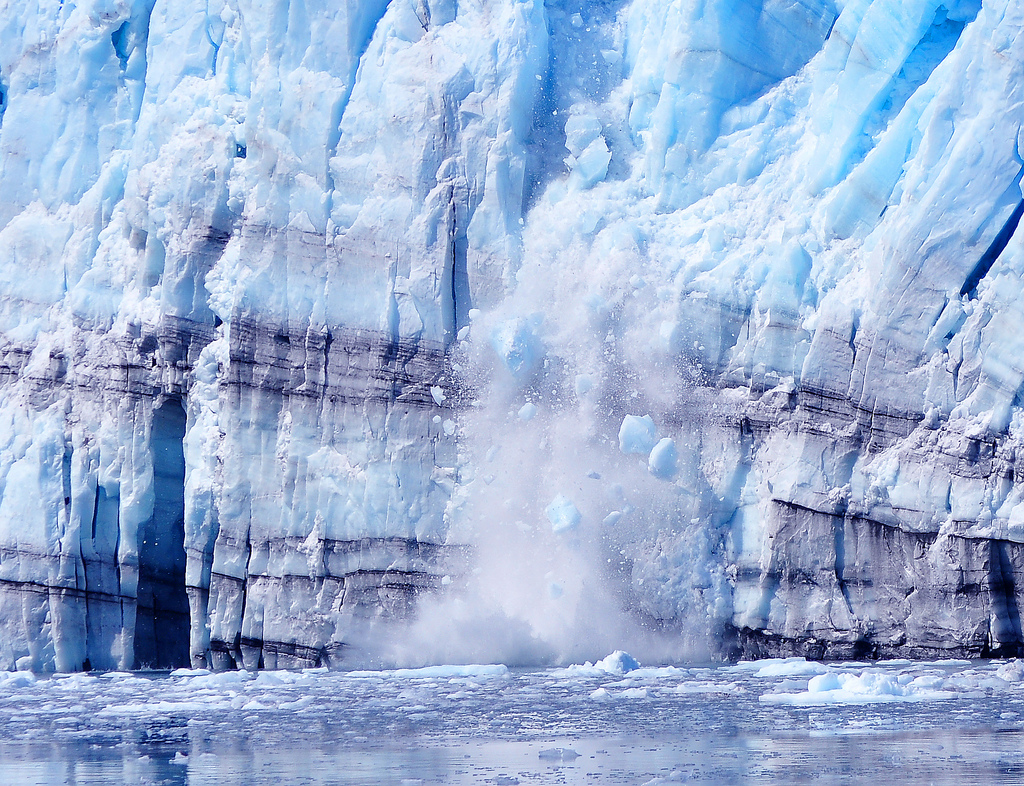The environmental movement in the United States faces many challenges from varied social, political, and economic pressures. Economic growth and the free market often take priority over all other issues, regardless of the implications of those values. As such, attempts at regulation or environmental protection are viewed as restrictive and infringing upon the rights of businesses and the free market. Today, the mainstream corporate media is a tool that is used to create pushback against environmental concerns that could potentially affect business models or bottom lines. As Mark Shibley and Annette Prosterman state, “whether an environmental issue becomes a social problem is related to how social events are framed.” [1] The presentation of environmental problems to the public directly shapes how society reacts to those problems. The role of the media in a democratic society is to spread information to the public that allow for informed decisions. When the media ignores or downplays these threats, the public is unaware of the issues and consequently does not take action. Media in the United States is currently working in opposition to the environmental movement by stopping the flow of information to the people. By looking into the motivations of both energy companies and the media, the misleading and downplayed coverage of environmental issues can be better understood.
It is important to first examine who owns the media. In 2012, six companies owned 90% of all media in the United States: GE, NewsCorp, Disney, Viacom, Time Warner, and CBS.[2] The majority of informational power is concentrated into the hands of just 252 media executives. Many of these news companies’ executives serve on the boards of media outlets and fossil fuel companies thus creating a potential conflict of interest. For example, GE’s executives serve on Texaco, Washington Post’s with Ashland Oil, and the Wall Street Journal’s with Ford, Shell Oil and Texaco.[2] Fossil fuel companies currently have $27 trillion of assets in the known oil reserves.[13] This creates an incentive to ensure that the value of those assets is realized through oil sales.
Each of these media companies’ executives have personal interests and wants to maximize their profits, as is the goal of any businessman in a capitalist society. Rather than providing information and unbiased reporting to viewers, media companies are instead focused on profits and funding. The need to continue increasing profits at any cost makes “an ever-growing ecological crisis an iron necessity so long as capital rules.”[3] Daniel Farber, a professor of law at UC Berkely, contends that in order to inhibit the information revealing the harms of fossil fuels from being spread, “[t]hese corporations have created a sophisticated network of think tanks, policy institutes, research centers, foundations, nonprofit organizations, public relations firms, and political action committees…committed to discrediting the environmental movement.”[4] Fossil fuel companies fund these organizations which report to the media companies. The media companies, encouraged by fossil fuel companies, then spread the information from these think tanks and foundations. By investing money into anti-climate change science, fossil fuel companies hope to prevent any negative feedback against their products and spread doubt about the climate movement.
However, it is not only the executives of media companies that influence what types of stories are shared. Advertisers also have a huge impact on the media due to their high levels of investment. News outlets get a majority of their funding through advertisements and consequently can be held to the demands of those advertisers. If a journalist reports a story critical of the actions of any of their advertisers, the media company could fire the journalist to save their relationship with the advertiser. In this way the media can filter their content to avoid offending their funders, rather than providing unbiased information to the public.
The Fox-Monsanto scandal illustrates this advertiser-news outlet dynamic. In 1997, reporter Jane Akre conducted a 4-part interview series with Monsanto’s dairy research director Bob Collier regarding the chemical rbGH being used in Monsanto’s milk. This chemical has been shown to be harmful both to human health and to the environment. Throughout the interview, Akre used Monsanto’s own research studies to show that the chemical had potentially dangerous effects on human health. The night before the series was supposed to be aired, Fox News pulled the story after receiving warnings from Monsanto that it would not be in the network’s best interest to continue with the story. To avoid a confrontation with Monsanto, Fox fired Akre, a journalist who assisted her, and the station’s general manager. Although Akre sued Fox and invoked the state’s whistleblower laws for protection, the case eventually ruled in favor of the news corporation. When Florida ruled in favor of Akre, Fox appealed to the federal court. The FCC’s policy against distorting the news is a guideline, and not actually a law, so the Florida whistleblower law could not protect Akre in federal court.[5] This scandal an example of how media outlets can be held to their sponsor’s demands rather than to honest journalism. Monsanto’s deep pockets appeared to overpower the ethical reporting practices that Fox is supposed to have upheld.
The most striking evidence of the media’s pushback against the environmental movement is the relative lack of coverage of environmental issues. On average, environmental stories account for only 1% of all headlines.[6] Considering environmental problems affect the entire nation, it seems at odds with public interest that they receive such little attention. When mainstream news media does report on the environmental issues, they do so in a slanted way. In a recent controversial example, the Keystone XL Pipeline, the media has been overtly biased in their presentation of the debate. The Keystone XL oil pipeline is slated to stretch from Alberta to Nebraska. While politicians may point out the economic benefits and job creation that would come from the project, environmentalists warn about the consequent carbon dioxide emissions and the land and forests that would be destroyed in the process of extracting the oil. While the Keystone XL pipeline debate was often presented as a jobs versus environment issue, specific environmental concerns were only mentioned in 34% of cable coverage and 17% of broadcast coverage. Citizens trying to form an opinion on this issue are not given an adequate representation of both sides of the debate. Even when people did feel strongly about the environmental concerns of the pipeline and organized protests to share their opinions, these protests were largely ignored by the media. The protests were only mentioned in 29% of print coverage, 22% of broadcast coverage, and 21% of cable coverage.[7]
Another recent example of a lack of media coverage occured during the People’s Climate March. This gathering of over 400,000 people in New York City was a call for stronger actions regarding climate change. The march took place several days before the UN Climate Summit in an attempt to draw attention to the public demands of the U.S. and other world leaders. The coverage of this major event in mainstream media was uneven. “NBC Nightly News” was the only evening news show to do a segment on the march.[8] ABC included a 23 second mention, while CBS omitted the topic. In contrast, Paris Hilton had a brief jail sentence in 2007 and 4% of national news was devoted to the story.[9] To put that number in perspective, as mentioned earlier, environmental stories only make up 1% of headlines on average. When the media chooses to prioritize flashy, celebrity news stories while ignoring fundamental policy issues that concern the entire society, the public is left uninformed.
When the media does include environmental stories, however, there is often confusion and doubt created around the scientific consensus on climate change. In a study conducted regarding Fox News, the highest viewed news outlet in America, 93% of 40 representations on climate change were misleading, causing viewers to be unclear about the facts around climate change, suggesting that there is a large minority of scientists who disagree on the existence and effects of climate change.[10] Similarly, in the Wall Street Journal, 81% of 48 representations on climate change were misleading. The source of the confusion is not based on faulty science or disagreement on the part of climate scientists. In fact, 97% of scientists agree that climate change is anthropogenic and dangerous.[11] Conservative think tanks and lobbyists for the fossil fuel industry manufacture the source of confusion. Some researchers, such as John S. Dryzek, a professor at the University of Canberra, contend that: “[c]ontrarian scientists, fossil fuel corporations, conservative think tanks, and various front groups have assaulted mainstream climate science and scientists for over two decades”.[12] One way to impede the growing anti-fossil fuel movement is to create organizations that deny climate science, generating confusion for the public.
One example of such an organization is the American Petroleum Institute. In 1998, a memo from the American Petroleum Institute was leaked, outlining their plans to create uncertainty around climate science. This plan included a $600,000 budget for the creation of a National Media Relations Programme with a strategy to “inform the media about uncertainties in climate science…and thereby educate and inform the public, stimulating them to raise questions with policymakers.”[14] The American Petroleum had an interest in defeating the Kyoto Protocol, which would have made addressing climate change a priority. It was stated in this institute’s business plan that victory would be achieved when, “climate change becomes a non-issue meaning that the Kyoto proposal is defeated and there are no further initiatives to thwart the threat of climate change.”[14] It appears that The Institute’s goal was to create confusion regarding climate science so that action on climate change would not affect business operations.
Many fossil fuel companies are less direct about their intentions. Some invest money into private organizations like the Cato Institute, Citizens for a Sound Economy, and Americans for Prosperity who issue reports and studies aimed at dismissing the findings of climate scientists. In an article published by the Cato Institute titled, “UN Climate Summit: The Dirty Little Secret about Global Warming Obama Doesn’t Want You to Know,” the author downgrades the severity of climate change. Using phrases like, “barrage of alarmism” and statements such as, “[t]he urgency to grant the government the authority to limit energy choice is not justified,” this reported used rhetoric to actively fight climate science. The Koch brothers established the Cato Institute, Citizens for a Sound Economy, and Americans for Prosperity.[16] Koch industries ranks 13th in the nation for toxic air pollution and generates 24 million metric tons of greenhouse gases a year. They control at least four oil refineries, six ethanol plants, a natural-gas-fired power plant and 4,000 miles of pipelines.[16] It is in their best interest to keep the doubt surrounding climate change going as long as possible to preserve their business prospects.
Although a lot of media coverage discourages environmental activism, there are a growing number of networks offering the truth about these issues. Democracy Now and the New York Times often publish articles and segments going in-depth about environmental issues. The New York Times even has a section dedicated to the environment. They recently posted articles titled “On the Cusp of Climate Change” and “For Polar Bears, a Climate Change Twist.” By offering articles with different environment-related topics, newspapers like the New York Times allow readers to get a range of information and stay connected with environmental issues. Media outlets that provide people with accurate, consistent information will play a vital role in promoting the environmental movement and bringing these issues to national attention.
The media plays a crucial role in the flow of information in modern American society. During election season, voters try to gather information about the issues they want their representatives to solve. People often turn to television and newspapers to determine their priorities. Ideally, all news coverage would be presented with equal wight, so voters could form their own opinions and have the facts they need to be informed. However, the reality is that the media does not report on environmental issues in a consistent or accurate way, by controlling the information that is reported. Because of the power of money, media outlets can be held to the demands of corporate owners and advertisers. Any information criticizing these companies can be restricted, which has a major impact on the environmental movement’s efforts to spread its message. By ignoring and downplaying environmental issues in the media, citizens cannot get the information they need to understand the severity of these issues. In a democratic society where people rely on the media for a majority of information, the media needs to be truthful and dependable, honoring unbiased journalism over the power of money.
References
[1] Faber, Daniel. Capitalizing on Environmental Injustice: The Polluter-industrial Complex in the Age of Globalization. Lanham: Rowman & Littlefield, 2008. Print. 237
[2] Lutz, Ashley. “These 6 Corporations Control 90% Of The Media In America.” Business Insider. Business Insider, Inc, 14 June 2012. Web. 23 Oct. 2014.
[3] Kovel, Joel. The Enemy of Nature: The End of Capitalism or the End of the World? London: Zed, 2002. Print.39
[4] Faber, Capitalizing on Environmental Injustice, 15
[5] Smith, Jeffrey. “Monsanto Forced Fox TV to Censor Coverage of Dangerous Milk Drug.” The Huffington Post. TheHuffingtonPost.com, 13 Apr. 2009. Web. 23 Oct. 2014.
http://www.huffingtonpost.com/jeffrey-smith/monsanto-forced-fox-tv-to_b_186428.html
[6] “AAN Association of Alternative Newsmedia.” Webinar: Environmental Coverage in the News. N.p., n.d. Web. 26 Oct. 2014.
http://www.altweeklies.com/aan/webinar-environmental-coverage-in-the-news/Article?oid=6918724
[7] “STUDY: The Press And The Pipeline.” Media Matters for America. N.p., n.d. Web. 26 Oct. 2014.
[8] Mirkinson, Jack. “TV News Misses Yet Another Opportunity To Cover Climate Change.” The Huffington Post. TheHuffingtonPost.com, 22 Sept. 2014. Web. 25 Oct. 2014.
http://www.huffingtonpost.com/2014/09/22/peoples-climate-march-media-coverage_n_5860502.html
[9] “Public Blames Media for Too Much Celebrity Coverage.” Pew Research Center for the People and the Press RSS. N.p., n.d. Web. 26 Oct. 2014. http://www.people-press.org/2007/08/02/public-blames-media-for-too-much-celebrity-coverage/
[10] Aron. Is News Corp. Failing Science? (n.d.): n. pag. Web.
[11] “Home.” Climate Change: Vital Signs of the Planet. N.p., n.d. Web. 25 Oct. 2014.
[12] Dryzek, John S., Richard B. Norgaard, and David Schlosberg. Oxford Handbook of Climate Change and Society. Oxford, U.K.: Oxford UP, 2011. Print. 144
[13] McKibben, Bill. “The Reckoning.” Rolling Stone 2 Aug. 2012: 52-60. Print. 56
[14] Briefing, A. Greenpeace, By Kirsty Hamilton Climate Campaign, Greenpeace International August 1998, and Greenpeace International. THE OIL INDUSTRY AND CLIMATE CHANGE (n.d.): n. pag. Web. http://p3-raw.greenpeace.org/international/Global/international/planet-2/report/2006/3/the-oil-industry-and-climate-c.pdf
[15] “UN Climate Summit: The Dirty Little Secret about Global Warming Obama Doesn’t Want You to Know.” Cato Institute. N.p., n.d. Web. 26 Oct. 2014.
[16] “Inside the Koch Brothers’ Toxic Empire.” Rolling Stone. N.p., n.d. Web. 25 Oct. 2014.



